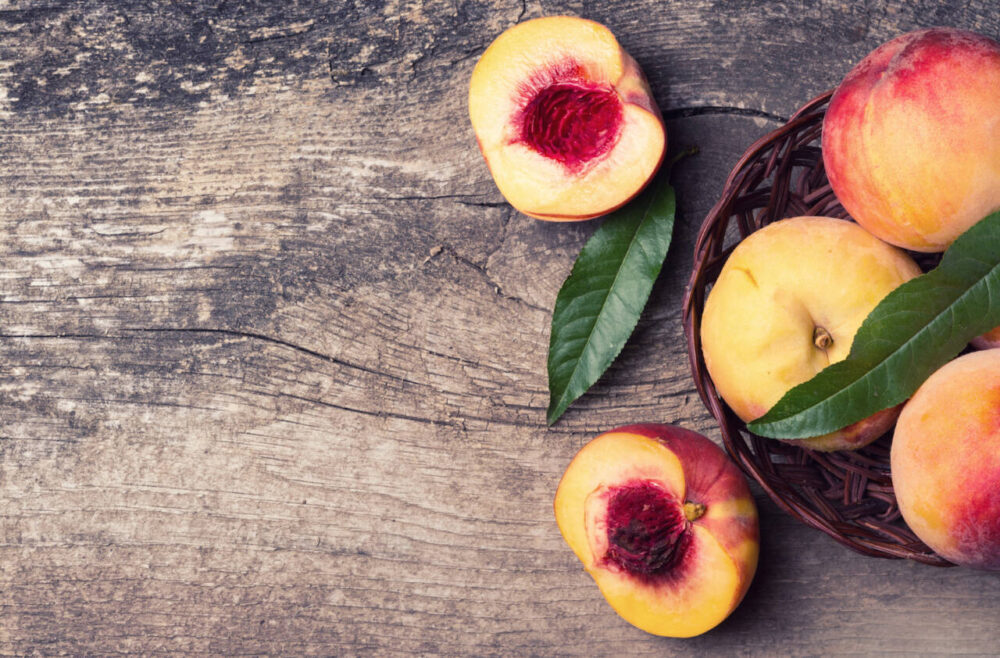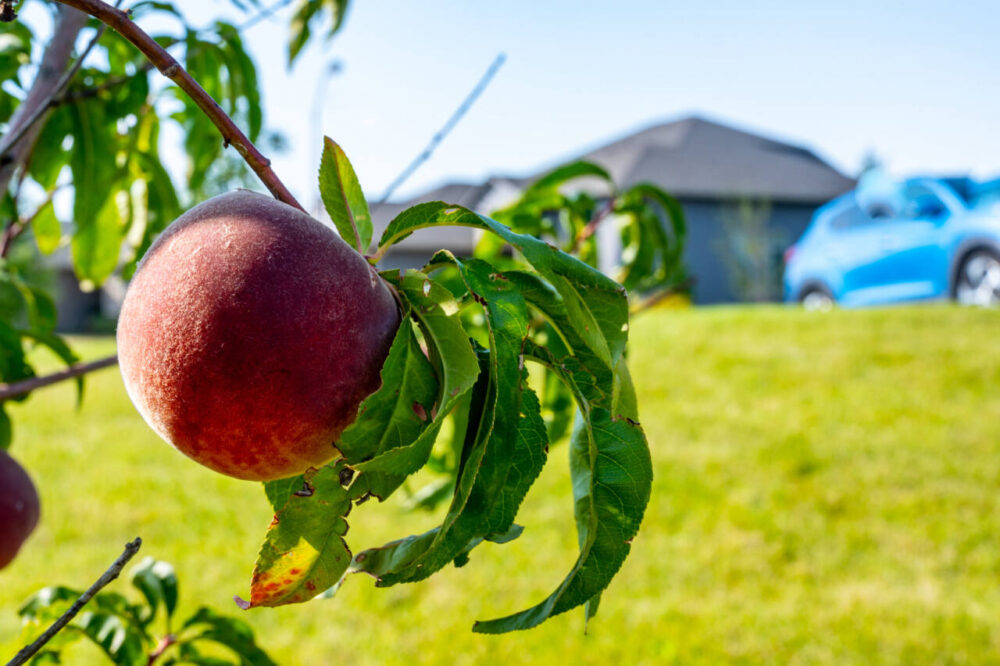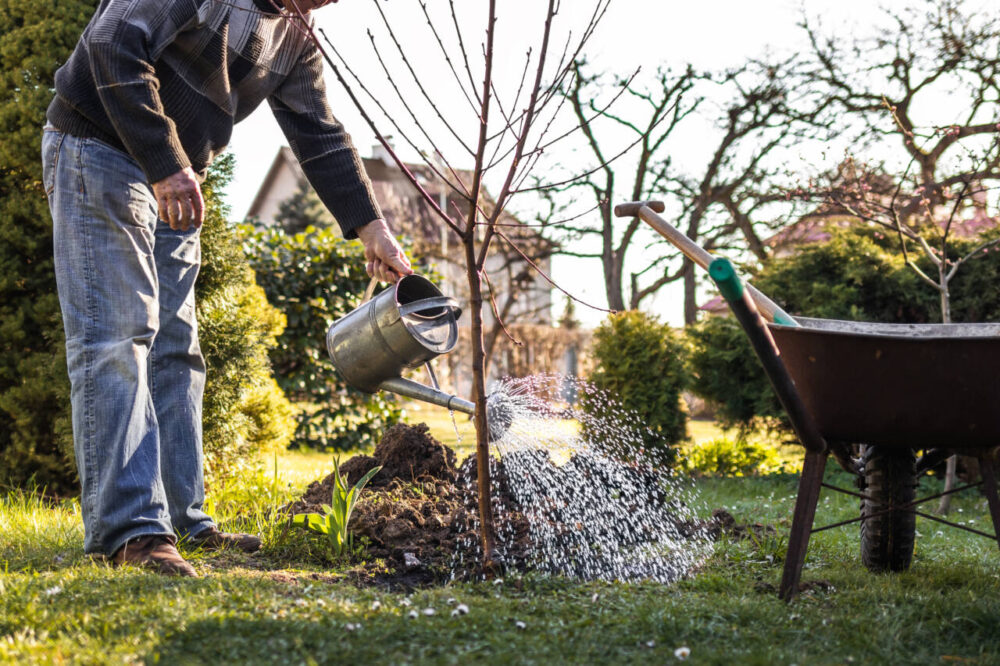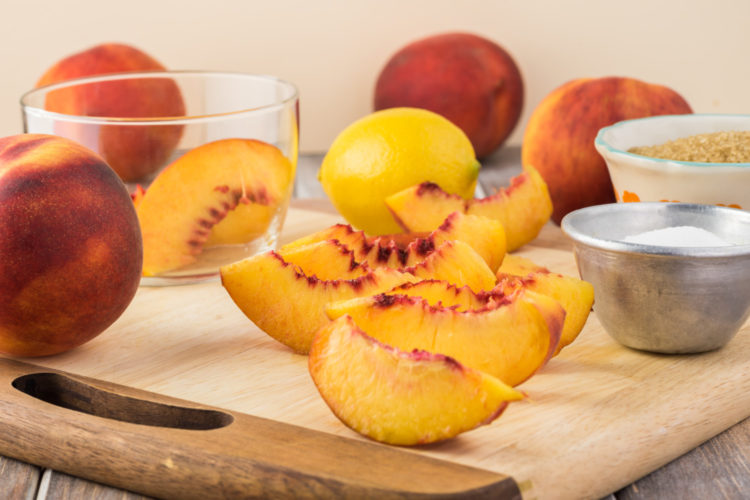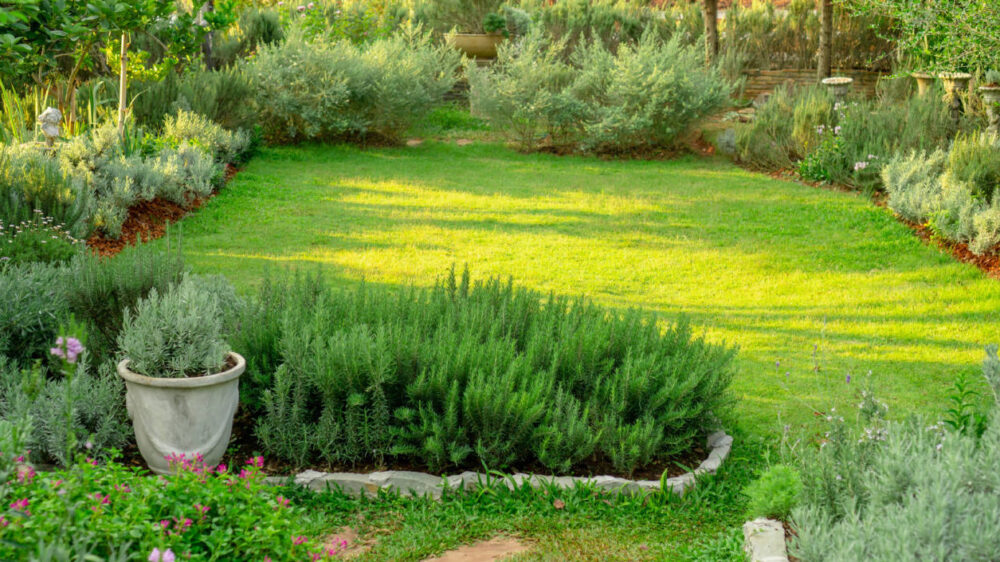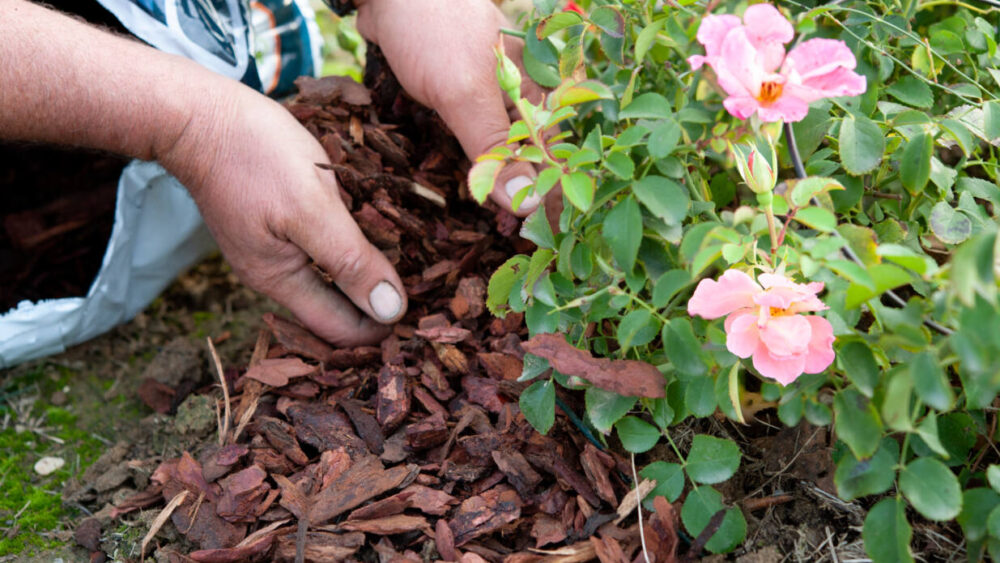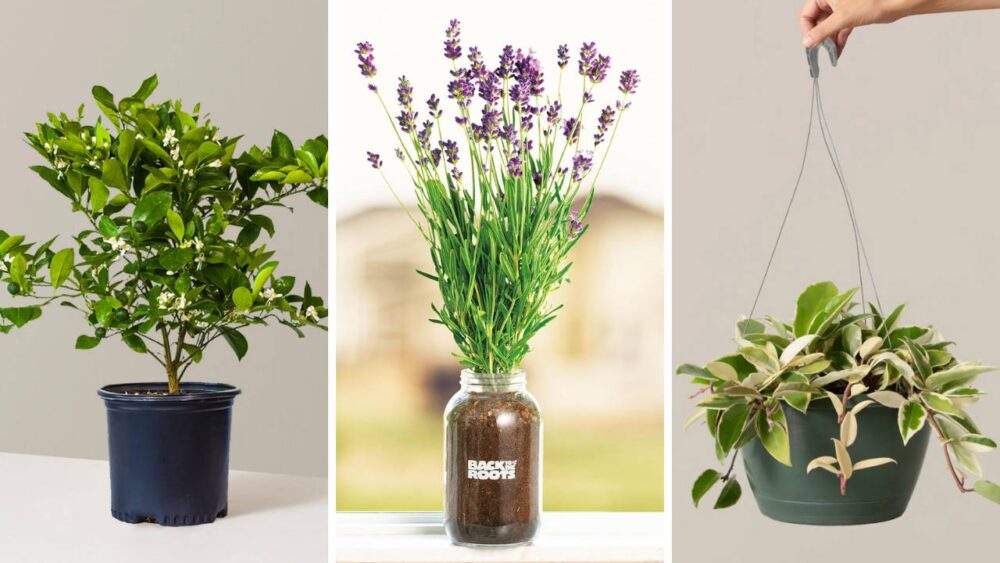How to grow peaches from your own tree this summer
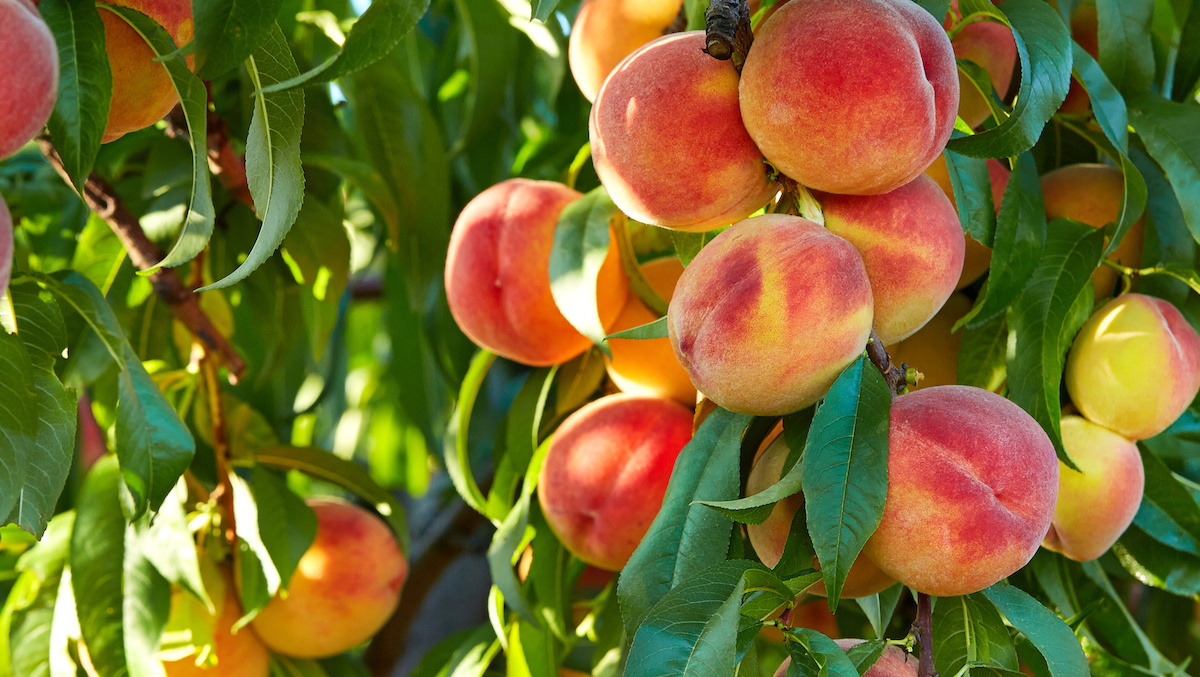
Nothing screams summer like biting into a ripe, juicy peach, a stone fruit that’s typically harvested in the United States from May through late September. While you can buy peaches at farmers markets, farm stands, grocery stores and other places that sell fresh produce, they’re even more satisfying harvested from your own tree. Read on to learn how to grow your own peaches, from where the crops do best to planting and pruning basics.
The Best Climate For Growing Peaches
Peach trees can grow in Zones 4 to 10 of the USDA Plant Hardiness Zone map, but do best in Zones 6 to 8. The stone-fruit trees don’t do well in extreme heat or severe cold. However, they are intolerant of areas where winters are mild, because most varieties benefit from some winter chilling (temperatures between 32 to 45 degrees Fahrenheit) that enables them to break dormancy in the spring and fruit in the summer.
MORE: A beginner’s guide to edible landscaping
For peach trees to thrive, they need full sun all day long and well-drained, sandy soil that isn’t compacted or continuously wet, and that has a slightly acidic pH between 6 and 6.5.
MORE: 7 fruit trees you can easily grow inside
Types of Peaches
Gardeners who live in Zones 6 to 8, where peach trees do particularly well, can choose varieties based on flavor and harvest time. But those who live in chillier or warmer regions should instead look for cold- or heat-tolerant varieties, respectively. Some cold-hardy peach varieties to consider include the Bounty, Canadian Harmony, Contender and Reliance, while some heat-tolerant options to look for are the Bonita, August Pride, Desert Gold and Early Amber.
You should also think about whether you want freestone peaches (firm fruits with center pits that aren’t attached to their flesh) or clingstone peaches (juicy fruits with center pits that are connected to their flesh).
The latter is less widely available in grocery stores and are typically sold at orchards or farmers markets. Another characteristic to consider when choosing the right peach tree variety to plant is the color of the flesh, which can be yellow (balanced, sweet and acidic) or white (soft and sweet) peaches.
How Long Peach Trees Take to Fruit
If they receive the proper care and maintenance, peach trees typically start flowering and fruiting when they are at least three years old. It is possible to grow your own peach tree using an average peach pit — but to harvest fruit sooner, plant a young tree with a healthy root system. Look for trees that are about one year old (older ones often aren’t as productive). Since peach trees are self-fertile, which means they pollinate themselves, you only need one plant to produce fruit.
When to Plant Peach Trees
After selecting a type of peach tree that is appropriate for your climate, plant it in the late winter or early spring, which is when the tree is still dormant. If the ground freezes in your area during the winter, wait until the soil has thawed and is relatively dry.
How to Plant Peach Trees
Seedlings or saplings should be planted right after you buy them, preferably the same day if possible. Once you are ready to put it in the ground, dig a hole that is a few inches deeper and wider than the roots of your peach tree.
Then, make a small mound of soil in the center of the hole and gently spread the tree’s roots away from its trunk, place it on top of the hole and cover it with soil.
If you’re planting multiple standard-size peach trees, space them 15 to 20 feet apart. Note: You don’t need to fertilize your peach tree when you plant it.
How to Care for Peach Trees
Young peach trees need 3 to 5 gallons of water per week via a deep watering method using a garden hose or drip system to properly establish strong root structures. Keep the soil evenly moist but avoid soaking it, which can damage your tree’s root structure.
Mature fruit trees often need less water, particularly if you reside in a place with decent rainfall, so you should only water them deeply every two to three weeks. However, how much you should water your peach tree will vary depending on the climate in your area and the type of peach you are growing.
Some master gardeners recommend that if you plant your peach tree in nutrient-dense soil (which you can find out via a soil test) you don’t need to fertilize until it begins bearing fruit at two- to four-years old. However, other gardening experts recommend applying a complete fertilizer during the peach trees’ first three years of life to boost root development.
The best fertilizer for mature peach trees is one formulated for fruit trees that has a high concentration of nitrogen. Consult the label for specific instructions for how much and how often to fertilize your peach tree.
Pruning your peach tree annually supports increased fruit production. In the early spring, when the tree’s buds start to swell and turn pink, trim away any branches that are damaged or growing downward or horizontally, so they are well spaced. The tree should be a vase shape with an open center to give blooms and fruit proper access to air and sunshine.
Harvesting Your Peach Tree
Peach tree fruit ripens in mid-summer to mid-fall, depending on where you live and the variety you are growing. Pick your peaches when they are no longer green and when they easily come off the branches with a gentle upward twist. Be sure to harvest all the fruit on your tree after the growing season to prepare it for the winter. Enjoy your peaches in cobblers, cakes — or fresh off the tree (no, you don’t need to remove the skins).


